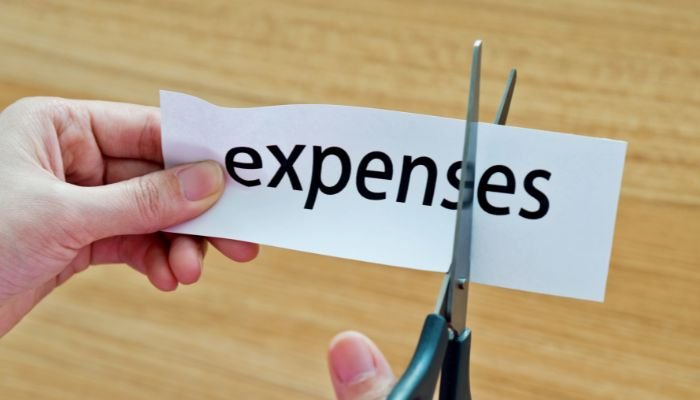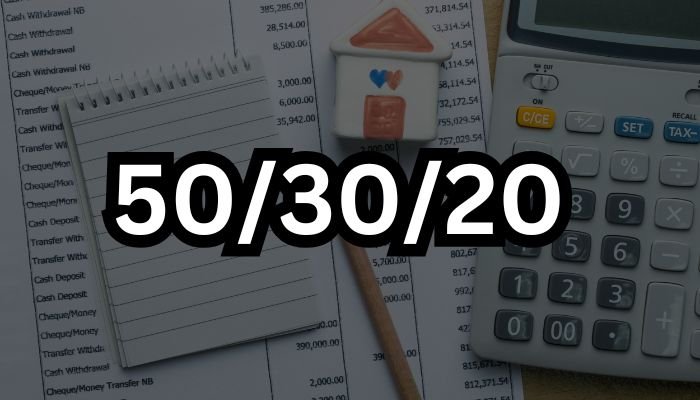Disclaimer: This post may contain affiliate links, meaning we get a small commission if you make a purchase through our link at no extra cost to you. For more information, please visit our Disclaimer Page.
Have you ever found yourself wondering where all your money went at the end of the month?
Managing your finances can often feel overwhelming, especially when it comes to identifying the monthly expenses that should be in every budget.
Understanding these essential expenses is crucial for maintaining financial stability and achieving your long-term goals.
It doesn’t matter if you’re a seasoned budgeter or just starting out, knowing what to include in your budget can help you gain control over your spending.
From housing and utilities to groceries and transportation, these core expenses form the foundation of your financial plan.
In this blog post, we’ll explore the essential monthly expenses that everyone should account for in their budget, along with practical tips for managing them effectively.
Types of Monthly Expenses
When it comes to managing your finances effectively, understanding the different types of monthly expenses is crucial.
Fixed Expenses
Fixed expenses are the cornerstone of your monthly budget. These are costs that remain relatively constant from month to month, making them easier to plan for and manage. Here are some common fixed expenses you’re likely to encounter:
- Rent or mortgage payments
- Car loan payments
- Student loan payments
- Insurance premiums (health, auto, life, etc.)
- Property taxes (if not included in mortgage payments)
- Internet and cable subscriptions
- Gym memberships
Fixed expenses are typically non-negotiable and must be paid regularly to maintain your lifestyle and avoid penalties.
They form the foundation of your budget, and you should prioritize these payments to ensure financial stability.
Variable Expenses
Unlike fixed expenses, variable expenses can fluctuate from month to month. These costs are often influenced by your lifestyle choices and consumption habits.
While they may be less predictable, they still play a significant role in your overall budget.
Some examples of variable expenses include:
- Groceries
- Dining out
- Utility bills (electricity, water, gas)
- Transportation costs (fuel, public transit fares)
- Entertainment (movies, concerts, hobbies)
- Clothing and personal care items
- Home and vehicle maintenance
Variable expenses offer more flexibility in terms of cost-cutting if needed.
By carefully tracking these expenses, you can identify areas where you might be overspending and make adjustments to align with your financial goals.
Periodic Expenses
Periodic expenses are those that occur less frequently than monthly but still need to be accounted for in your budget. These expenses can catch you off guard if you’re not prepared, potentially disrupting your financial plans. Some common periodic expenses include:
- Annual insurance premiums
- Vehicle registration and inspection fees
- Property taxes (if paid separately from mortgage)
- Holiday and birthday gifts
- Seasonal clothing purchases
- Vacations and travel expenses
- Home appliance replacements
To manage periodic expenses effectively, consider setting aside a small amount each month in a dedicated savings account. This approach helps you avoid financial stress when these less frequent bills come due.
Discretionary Expenses
Discretionary expenses are non-essential costs that enhance your quality of life but aren’t necessary for basic living.
These expenses often reflect your personal interests and lifestyle choices. While they’re not critical for survival, they can significantly impact your overall financial well-being.
Examples of discretionary expenses include:
- Streaming services (Netflix, Hulu, Disney+)
- Hobbies and recreational activities
- Luxury items or brand-name products
- Spa treatments or salon visits
- Subscriptions to magazines or online services
- Charitable donations
- Impulse purchases
Discretionary expenses are typically the first area to review when looking to cut costs or save money.
By carefully evaluating these expenses, you can identify areas where you might be overspending and reallocate funds to more important financial goals.
Emergency Fund Contributions
While not a traditional expense, setting aside money for an emergency fund should be a priority in your monthly budget.
An emergency fund acts as a financial safety net, helping you cover unexpected expenses or loss of income without resorting to high-interest debt.
Consider allocating a portion of your monthly income to build and maintain this fund.
Savings and Investments
Another crucial aspect of your monthly expenses should be contributions to your savings and investment accounts.
These “expenses” are essentially payments to your future self, helping you build long-term financial security.
Consider including the following in your budget:
- Short-term savings goals (e.g., for a down payment on a house)
- Investment contributions (stocks, bonds, mutual funds)
- Education savings (529 plans for children’s education)
By treating savings and investments as monthly expenses, you prioritize your financial future and make progress towards your long-term goals.
Debt Repayment
If you have outstanding debts, such as credit card balances or personal loans, it’s essential to include debt repayment as a separate category in your monthly expenses.
This approach helps you focus on reducing your debt burden and improving your overall financial health.
Consider the following when budgeting for debt repayment:
- Minimum payment requirements
- Additional payments to accelerate debt reduction
- Interest rates and prioritization of high-interest debts
By categorizing your debt repayment as a distinct expense, you’re more likely to stay committed to your debt reduction goals and avoid accumulating additional debt.
Comparison of Expense Types
To better understand how these different types of expenses impact your budget, let’s look at a comparison table:
| Expense Type | Predictability | Flexibility | Impact on Budget |
|---|---|---|---|
| Fixed | High | Low | Stable, easy to plan |
| Variable | Medium | Medium | Requires monitoring and adjustment |
| Periodic | Low | Medium | Needs proactive planning |
| Discretionary | High | High | Potential for significant savings |
| Emergency Fund | High | Low | Essential for financial security |
| Savings/Investments | High | Medium | Critical for long-term financial health |
| Debt Repayment | High | Low | Important for improving financial position |
By understanding these different types of monthly expenses, you can create a more comprehensive and effective budget. This knowledge allows you to allocate your income more efficiently, ensuring that you’re meeting your current needs while also planning for the future.
Examples of monthly expenses to include in a budget
Now that we’ve covered the types of monthly expenses, let’s dive into specific examples you should consider including in your budget. By accounting for these common expenditures, you’ll create a more accurate and comprehensive financial plan.
Housing
Your housing costs are likely to be one of your largest monthly expenses. Whether you rent or own, it’s crucial to factor this into your budget.
- Rent or mortgage payments: This is typically a fixed amount you pay each month.
- Property taxes: If you own a home, you’ll need to account for these, even if they’re included in your mortgage payment.
- Homeowners or renters insurance: Protect your living space and belongings with appropriate insurance coverage.
- Maintenance and repairs: Set aside funds for unexpected issues or regular upkeep.
Utilities
Utility costs can vary from month to month, but they’re essential expenses you need to consider:
- Electricity
- Gas
- Water and sewer
- Trash collection
Tip: Look at your past bills to estimate an average monthly cost for each utility.
Food and dining out
Your food budget should include both groceries and meals outside the home:
- Groceries: Plan for regular trips to the supermarket.
- Dining out: Include restaurants, coffee shops, and takeout meals.
- Work lunches: If you buy lunch at work, factor this into your budget.
Transportation
Whether you drive, use public transit, or a combination of both, transportation costs can add up:
- Car payment: If you’re financing a vehicle, include your monthly payment.
- Insurance: Don’t forget to budget for your auto insurance premiums.
- Gas: Estimate your monthly fuel costs based on your driving habits.
- Maintenance and repairs: Set aside money for oil changes, tire rotations, and unexpected repairs.
- Public transportation: Include costs for bus passes, train tickets, or ride-sharing services.
- Parking fees: If you regularly pay for parking, add this to your budget.
Cell phone
In today’s connected world, your cell phone is likely an essential expense:
- Monthly plan: Include your regular phone bill.
- Device payments: If you’re paying off your phone in installments, factor this in.
- App subscriptions: Don’t forget any recurring app purchases or subscriptions.
Health insurance
Healthcare costs are crucial to include in your budget:
- Insurance premiums: Whether through your employer or purchased individually, include your monthly premium.
- Co-pays and deductibles: Set aside money for doctor visits and potential medical expenses.
- Prescriptions: Budget for any regular medications you need.
Debt payments
If you have outstanding debts, make sure to include these payments in your budget:
- Credit card payments: Include at least the minimum payment, but aim to pay more if possible.
- Personal loans: Factor in any installment loan payments.
- Student loans: Don’t forget about your education debt.
Savings contributions
Saving for the future is an essential part of financial health:
- Retirement accounts: Budget for contributions to your 401(k) or IRA.
- Emergency fund: Set aside money each month to build or maintain your emergency savings.
- Specific savings goals: Include savings for big purchases or life events (e.g., a new car, wedding, or vacation).
Entertainment
While not essential, entertainment is important for maintaining a balanced lifestyle:
- Movie tickets or streaming services: Budget for your favorite forms of entertainment.
- Hobbies: Include costs associated with your personal interests.
- Social activities: Factor in expenses for outings with friends or family.
Streaming services, cable and internet
In our digital age, these services have become increasingly important:
- Internet service: Include your monthly internet bill.
- Cable or satellite TV: If you still have traditional TV service, budget for it.
- Streaming services: Don’t forget subscriptions to platforms like Netflix, Hulu, or Disney+.
Memberships and subscriptions
Review your recurring memberships and subscriptions:
- Gym memberships: Include your monthly or annual fees.
- Club memberships: Factor in any social or professional organization dues.
- Magazine or newspaper subscriptions: Don’t forget about your reading materials.
- Software subscriptions: Include any recurring software licenses you use.
Travel expenses
If you travel regularly, either for work or pleasure, include these costs:
- Vacation savings: Set aside money each month for your annual vacation.
- Business travel: If you have out-of-pocket expenses for work trips, budget for these.
- Weekend getaways: Include funds for shorter trips or staycations.
Emergency fund
While we mentioned savings earlier, it’s worth emphasizing the importance of an emergency fund:
- Aim to save 3-6 months of living expenses for unexpected events.
- Start small if necessary, but make consistent contributions.
- Keep this money in a separate, easily accessible account.
By including these examples of monthly expenses in your budget, you’ll have a comprehensive view of your financial obligations. This detailed approach allows you to make informed decisions about your spending and saving habits.
Everyone’s budget is unique, so tailor these categories to fit your specific lifestyle and financial goals.
Steps to creating your budget
Now that you’ve identified the essential monthly expenses to include in your budget, it’s time to take action and create a financial plan that works for you.
Follow these next steps to craft a comprehensive budget that aligns with your financial goals and helps you manage your money effectively.
Gather your financial information
The first step in creating your budget is to collect all relevant financial information.
This process will give you a clear picture of your current financial situation and help you make informed decisions about your spending and saving habits.
- Collect your pay stubs and income statements
- Gather bills and receipts from the past few months
- Review your bank and credit card statements
- List all your sources of income and expenses
By organizing this information, you’ll have a solid foundation for building your budget.
Calculate your total monthly income
Once you’ve gathered your financial information, it’s time to determine your total monthly income.
This figure will serve as the basis for your budget calculations and help you understand how much money you have available to allocate towards expenses and savings.
To calculate your total monthly income:
- Add up all sources of regular income (e.g., salary, freelance work, investments)
- Include any variable income (e.g., bonuses, commissions)
- Consider seasonal fluctuations in your income
Remember to use your after-tax income to get an accurate picture of your available funds.
List and categorize your expenses
With your income calculated, the next step is to list and categorize all your expenses. This process will help you understand where your money is going and identify areas where you might be overspending.
Categorize your expenses into the following groups:
- Fixed expenses (e.g., rent, mortgage, car payments)
- Variable expenses (e.g., groceries, utilities, entertainment)
- Debt payments (e.g., credit card balances, student loans)
- Savings and investments
Use the following table to organize your expenses:
| Category | Expense | Amount |
|---|---|---|
| Fixed | Rent | $1,200 |
| Car payment | $300 | |
| Variable | Groceries | $400 |
| Utilities | $150 | |
| Debt | Credit card | $200 |
| Savings | Emergency fund | $100 |
Set financial goals
Setting clear financial goals is crucial for creating a meaningful budget. Your goals will guide your spending decisions and motivate you to stick to your budget. Consider both short-term and long-term objectives when setting your financial goals.
Examples of financial goals:
- Short-term: Build an emergency fund of $5,000 within 6 months
- Medium-term: Save $10,000 for a down payment on a house in 2 years
- Long-term: Contribute 15% of your income to retirement savings
Prioritize your goals based on their importance and urgency, and allocate your resources accordingly in your budget.
Choose a budgeting method
There are several budgeting methods to choose from, each with its own advantages. Select the one that best suits your financial situation and personal preferences.
Popular budgeting methods include:
- 50/30/20 Rule: Allocate 50% of your income to needs, 30% to wants, and 20% to savings and debt repayment
- Zero-based budgeting: Assign every dollar of income to a specific expense or savings category
- Envelope system: Use cash envelopes for different spending categories to control expenses
- Pay yourself first: Prioritize savings by setting aside a portion of your income before allocating money to expenses
Experiment with different methods to find the one that works best for you and helps you stay on track with your financial goals.
Use budgeting tools and apps
Take advantage of modern technology to simplify the budgeting process. There are numerous budgeting tools and apps available that can help you track your expenses, set financial goals, and monitor your progress.
Popular budgeting apps include:
- Mint
- YNAB (You Need A Budget)
- Personal Capital
- EveryDollar
These tools can sync with your bank accounts, categorize your expenses automatically, and provide visual representations of your spending habits, making it easier to stay on top of your finances.
Review and adjust your budget regularly
Creating a budget is not a one-time task; it requires regular review and adjustment to ensure it remains effective and aligned with your changing financial situation and goals.
Schedule monthly budget reviews to:
- Compare your actual spending to your budgeted amounts
- Identify areas where you’re overspending or underspending
- Adjust category allocations as needed
- Track progress towards your financial goals
- Update your budget to reflect changes in income or expenses
By consistently reviewing and adjusting your budget, you’ll be better equipped to handle financial challenges and stay on track towards achieving your goals.
Implement strategies to stick to your budget
Creating a budget is just the first step; the real challenge lies in sticking to it. Implement these strategies to help you stay committed to your financial plan:
- Use cash for discretionary spending to limit overspending
- Automate bill payments and savings contributions
- Find accountability partners or join a financial support group
- Reward yourself for meeting budget milestones
- Practice mindful spending by questioning purchases before making them
- Look for ways to reduce expenses, such as negotiating bills or finding cheaper alternatives
Remember that budgeting is a skill that improves with practice. Be patient with yourself and celebrate small victories as you work towards your financial goals.
Educate yourself on personal finance
To make the most of your budget and improve your overall financial health, continue to educate yourself on personal finance topics. Stay informed about:
- Investing strategies
- Tax planning
- Debt management techniques
- Retirement planning
- Insurance options
By expanding your financial knowledge, you’ll be better equipped to make informed decisions and optimize your budget for long-term success.
As you move forward with creating and implementing your budget, remember that it’s a dynamic process that requires ongoing attention and adjustment.
Stay committed to your financial goals, and don’t be afraid to seek professional advice if you need additional guidance.
With a well-crafted budget and the right mindset, you’ll be on your way to achieving financial stability and success.
Conclusion: Monthly Expenses That Should Be In Every Budget
Understanding the monthly expenses that should be in every budget is essential for achieving financial success.
By identifying and categorizing these core expenses, you can create a comprehensive budget that reflects your unique needs and goals.
Key categories such as housing, utilities, groceries, transportation, insurance, and savings are vital components that form the backbone of your financial plan.
Regularly reviewing and adjusting these expenses ensures you remain on track with your budget and can adapt to any changes in your financial situation.
Remember, budgeting is not just about restricting your spending; it’s about empowering yourself to manage your resources wisely.
By incorporating these monthly expenses into your budget and prioritizing them, you’ll build a strong foundation for financial stability and long-term prosperity.
Start today and take charge of your financial future by embracing the essential expenses that matter most.





